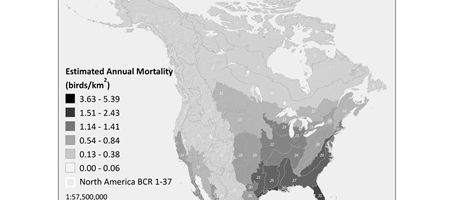Almost seven million birds are killed by communications towers every year as they migrate from the United States and Canada to Central and South America.

According to University of Southern California scientists, this is 28 times as many birds as were killed by the Exxon Valdez oil spill. The birds are killed by the guy cables surrounding the 84,000 tall communication towers, mostly used for radio and TV, that cover North America.
“This is a tragedy that does not have to be,” says lead author Travis Longcore, associate professor in the USC Spatial Sciences Institute at the USC Dornsife College of Letters, Arts and Sciences.
“With these towers, we are killing birds in an unnatural way. This is senseless.”
The taller the tower the greater the threat, the study found. The 1,000 or so towers above 900 feet accounted for only 1.6 percent of the total number of towers. Yet these skyscraper towers killed 70 percent of the birds, about 4.5 million a year, Longcore said.
During bad weather, the birds are pushed down by cloud cover and fly at lower altitudes. The clouds also removed navigation cues, such as stars, leaving only the blinking or static red lights of towers.
While blinking lights seemed not to be too much of a problem, towers with a static red light resulted in more dead birds.
“In the presence of the solid red lights, the birds are unable to get out of their spell,” Longcore said. “They circle the tower and run into the big cables holding it up.”
Longcore estimates that changing the steady-burning lights on the 4,500 towers greater than 490 feet tall – about six percent of the total – could reduce mortality by about 45 percent and save 2.5 million birds.
The study also recommends that businesses share towers to reduce their number and build more freestanding towers to reduce the need for guy wires.






